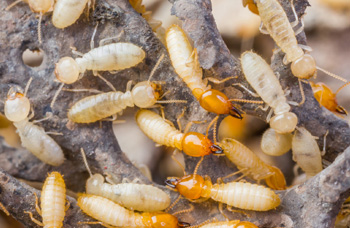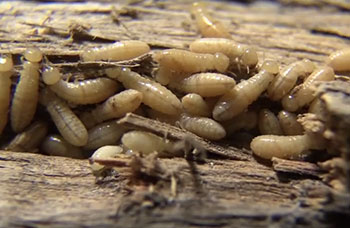Termite Types & Facts
Subterranean Termite Facts
- Typically 1/8-3/8 of an inch in length and can be a pale peach, light or dark brown color.
- Live underground, multiplying rapidly and in constant search for wood.
- If left undetected they will continuously attack the home causing costly structural damage.
Subterranean Termites
Subterranean termites live in underground colonies or in moist secluded areas aboveground. Their colonies can contain more than a million members. They build characteristic “mud tubes” from mud, saliva and fecal matter. These tubes act as entry points for subterranean termites to gain access to above-ground food sources and to protect themselves from open air. Subterranean termites are most commonly located near the foundation of an infested home.
What Are Subterranean Termites?
Subterranean termites are the most common type of termites that infest homes. They are found throughout the United States, but more typically in warmer climates. These termites need moisture to survive. They are closely associated with the soil, where they typically construct an underground nest or a series of interconnected nests, hence the name “subterranean termites.” Soil serves as a source of moisture that helps protect termites from the drying effects of air. It also shields termites from predators (ants, birds, lizards, etc.) that feed on them. Subterranean termites excavate narrow tunnels through the soil, creating a network through which they can travel very long distances to reach food. They also transport soil above ground to construct mud tubes and to line their feeding galleries in wood.
Subterranean termites are social insects that live in nests or colonies in the soil. Termite colonies are organized into castes depending on tasks – workers, soldiers, and reproductive (swarmers). The characteristics of a subterranean termite are dependent on the termite’s role in the colony. Cream-colored worker subterranean termites are flattened, relatively small (1/8 to 3/8 inch in length), coal black to pale yellow-brown in color, and have pale or smoke-gray to brown wings. Soldier subterranean termites have cream-colored bodies, brown heads, are of a similar body length, but are distinguished by their powerful jaws. Swarmers have straight, bead-like antennae, a thick waist and a pair of long, equal-length wings that break off easily.
Subterranean Termite Infestation
Subterranean termite colonies may contain hundreds of thousands of individuals, foraging in many different directions. Due to the fact that subterranean termites need moisture to survive, outside, they are most often found in trees, some plants, firewood, mulch and scrap lumber. In structures, subterranean termites can be found entering structures around plumbing penetrations, cement joints, cracks, and other areas that give them access to the structure. Any wood that is in direct contact with the soil is also a prime target for subterranean termites. However, they have been found in aerial spaces where moisture is readily available, as well.
The presence of winged termites or shedded wings inside a home are telltale signs of a termite infestation. Winged termites are highly attracted to sources of light and are most active in springtime. Subterranean termites usually build large colonies underground that are composed of elaborate tunnels and chambers through which they access above-ground food sources. When subterranean termites eat wood, they fill it with soil to help maintain the humidity. If mud tunnels are visible on the walls or foundation of your home, it is highly likely that you are experiencing a subterranean termite infestation.
How to Get Rid of Subterranean Termites
Subterranean termites need contact with the soil and moisture to survive and live underground. They can build tunnels through cracks in concrete. Because Subterranean termites thrive on moisture, you should try to prevent water from accumulating at the foundation of your home including installing gutters, splash blocks, or downspouts. Creating an artificial slope will allow water to drain away from the structure. Humidity in crawl spaces may be reduced with proper ventilation. Secondly, sanitation is crucial. Keep trees, vines, and trellises trimmed so they are not touching the structure, and never pile or bury extra wood scraps or lumber near the home.
Lastly, termite baiting is a fairly simple process and can be used as a tool to monitor termite activity early on before infestations flare up. The termites feed on the bait and take the bait back to the colony to kill the most termites possible. Termite baiting systems also have an effect on the entire termite colony which suppresses their population and can eventually lead to death of the entire colony. Installing bait stations around your home provide excellent control when combined with a barrier/soil treatment. If you suspect infestation, contact a pest professional about subterranean termite treatment.

